Beginning the IVF journey can bring a mix of emotions, from hope and excitement to anxiety about the process itself.
One common concern for many couples considering or undergoing IVF is the need for injections. “How many injections for IVF treatment?” is a frequently asked question, and understanding this crucial aspect can significantly ease your mind.
This detailed guide, designed for easy understanding, will walk you through the types, purposes, schedule, and what to expect from IVF injections.
Why are IVF Injections Necessary?
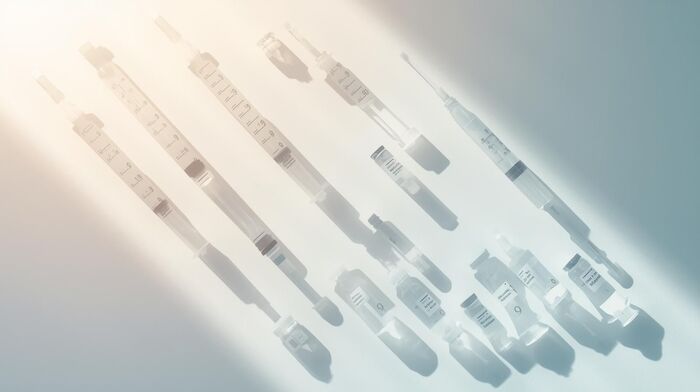
Before diving into the numbers, let’s understand why IVF injections are so important.
In your natural menstrual cycle, your ovaries typically produce only one mature egg each month. For IVF (in Vitro fertilization), however, the goal is to stimulate your ovaries to produce multiple eggs. This “controlled ovarian hyperstimulation” increases the chances of successful fertilization and embryo creation.
Beyond stimulating egg production, IVF injections serve several other critical purposes:
- Preventing premature ovulation: They help ensure eggs are not released before they are ready for retrieval.
- Stimulating oocyte maturity: Injections help the eggs reach their final stage of maturation.
- Preparing the uterus: Hormones are given to make the uterine lining receptive for embryo implantation.
- Controlling the treatment timeline: Injections suppress your natural cycle, giving doctors precise control over ovulation and egg retrieval, which is crucial for successful IVF.
How Many Injections Can You Expect During IVF Treatment?
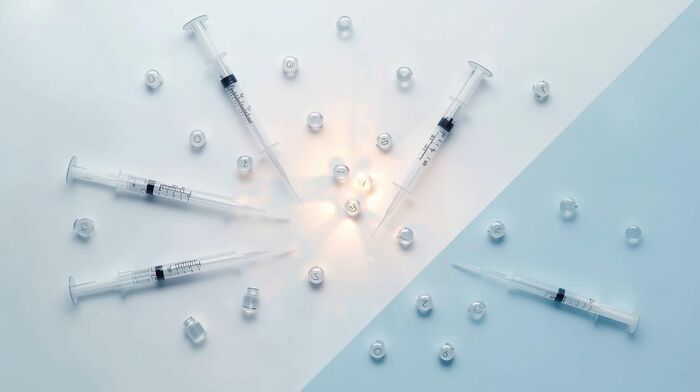
The total number of injections for an IVF cycle can vary significantly from patient to patient.
Factors like your age, ovarian reserve, health condition, and the specific protocol used by your fertility clinic all play a role.
Generally, an IVF cycle in India might involve anywhere from 20 to 40 shots. Some patients may require only a few injections, while others might need up to 90. On average, you can expect to take IVF injections for about 10-12 days in total during the ovarian stimulation phase. Overall, most patients might administer 16-40+ injections per IVF cycle, with gonadotropins making up the majority.
Also Read: What to Expect After Your IUI Treatment
IVF Injection Schedule: Before and After Embryo Transfer
The IVF journey involves several stages, and injections are strategically administered throughout. What does the typical schedule look like?
Injections Before Embryo Transfer (Ovarian Stimulation Phase)
This is the initial and often the most injection-intensive phase. Your doctor will determine the right day to begin, usually around day 2 of your menstrual period.
- Ovarian Stimulation (Days 8-14): For approximately 8 to 14 days, you will receive daily hormone injections to stimulate your ovaries to produce multiple follicles, each containing an egg.
- Gonadotropins: These are primary hormones like Follicle-Stimulating Hormone (FSH) and Luteinizing Hormone (LH), often given as 1-2 daily injections for 9-12 days. They promote the growth of multiple follicles and increase estrogen secretion to support superovulation.
- Human Menopausal Gonadotropins (HMG): These injections combine FSH and LH to stimulate the ovaries.
- GnRH Agonists (e.g., Lupron, Buserelin) & Antagonists (e.g., Cetrorelix): These are used to prevent a premature surge in LH, which could cause early ovulation before the eggs are ready for retrieval. Antagonists work faster and are often prescribed closer to the anticipated ovulation time. GnRH Analogues might involve 1-2 one-time trigger injections.
- Monitoring: Throughout this stimulation period, regular ultrasound scans and blood tests are conducted to monitor your progress and determine the optimal time for egg retrieval.
- Trigger Shot (1 shot): Once the follicles have reached a mature size, you will receive a single injection of Human Chorionic Gonadotropin (hCG), often referred to as the “trigger shot”. This injection triggers the final maturation of the eggs and cues their release. It is typically administered 34-36 hours before egg retrieval.
Injections After Embryo Transfer (Luteal Support Phase)
After the eggs are retrieved and fertilized in the lab, and the best quality embryo is transferred to your uterus, a new set of injections often begins.
- Progesterone Injections (Daily): These are crucial for preparing the uterine lining for embryo implantation and for maintaining a viable pregnancy. Progesterone helps thicken the endometrium. These injections are usually given once daily, starting from the day of egg retrieval and continuing for 10-14 days until a pregnancy test confirms success, or even up to the 10th-12th week of pregnancy until the placenta produces enough progesterone.
- Estrogen: Sometimes, estrogen drugs are also suggested right after embryo transfer to help thicken the endometrium.
- hCG Injections: While primarily a trigger shot, some sources mention hCG injections administered after embryo transfer to enhance pregnancy success and prepare the uterine lining. However, progesterone is more consistently cited for post-transfer support.
How Many Injections Per Day for IVF?
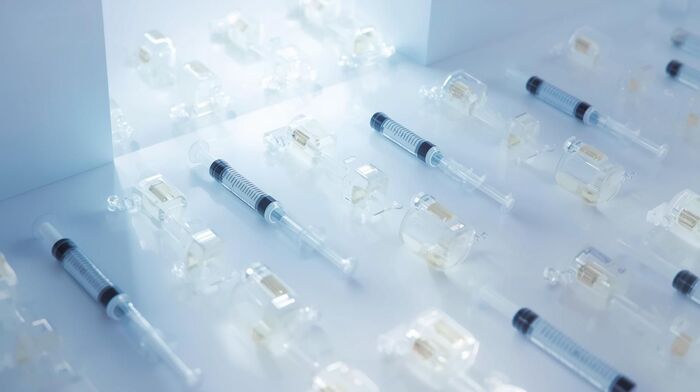
During the ovarian stimulation phase, you can generally expect to take 1-2 injections per day for about 8-14 days. Progesterone injections after embryo transfer are typically administered once daily. The trigger shot is a single, one-time injection.
Factors Affecting the Number of IVF Injections:
Why does the number of injections vary so much? Several individual factors influence your personalized treatment plan:
- Woman’s Age: Older women might need more eggs retrieved for success and, consequently, more injections.
- Ovarian Reserve: A higher ovarian reserve generally means fewer injections are needed due to a greater chance of success.
- Medical History: Complex medical history or previous infertility struggles might lead doctors to recommend more injections to optimize the outcome.
- Type of IVF Treatment: For instance, using donor eggs might require fewer injections.
- Patient’s Response: The dosage and number of shots are continuously monitored and adjusted based on how your body responds.
IVF Injection Cost:
The sources mention “IVF cost in India” and offer “0% interest on EMI All Procedures”. However, they do not specify the exact cost of IVF injections separately.
Typically, the cost of these hormonal medications is integrated into the overall cost of the IVF treatment cycle. The total IVF cost can vary based on the clinic, location, specific protocols, and individual patient needs.
Must Read: Best IVF Centers in Delhi
What Side Effects Can You Expect from IVF Injections?
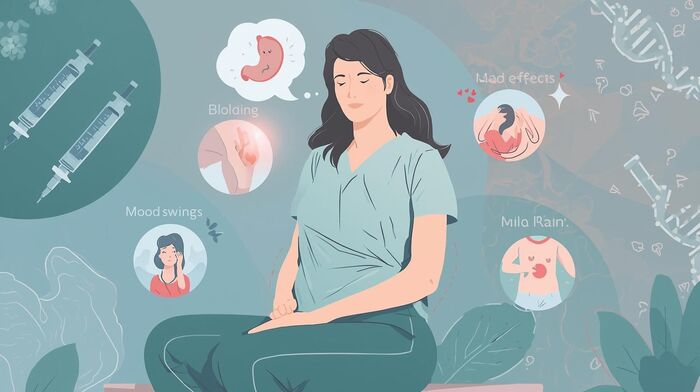
While IVF injections are essential, they can cause some side effects due to the hormonal changes in your body. Are IVF injections painful? The injections themselves might sting a little temporarily, and eggs are retrieved under anesthesia, resulting in minimal discomfort. However, you might experience cramps similar to menstrual cramps after egg retrieval.
Common side effects include:
1. Injection site reactions: Pain, swelling, redness, and bruising where the injection was given.
2. Hormonal fluctuations:
- Mood swings and irritability.
- Headaches.
- Nausea and sometimes vomiting.
- Hot flashes and night sweats.
- Abdominal pain, bloating, and tender breasts.
- Mild constipation or diarrhea.
- Changes in appetite and body weight.
- Fatigue, restlessness, dizziness, or temporary blurred vision.
3. Ovarian Hyperstimulation Syndrome (OHSS): This is an extreme reaction to hormone injections where ovaries swell and become painful. Symptoms can include severe abdominal pain, sensitive stomach, and increased bloating. OHSS is a serious condition that requires immediate medical attention.
If any symptoms persist or are extreme, it’s important to consult your fertility specialist immediately.
Managing IVF Injections and Potential Alternatives:
Can you give yourself the injections? Yes, after receiving proper training from healthcare professionals, many patients can self-administer subcutaneous injections at home. To manage the process:
- Create a clear schedule and set reminders for your doses.
- Choose a designated, clean area for injections.
- Rotate injection sites (abdomen, thigh, or upper arm) to avoid soreness.
- Relax your muscles before injecting to reduce discomfort.
- Warm the medication (e.g., in warm water) to make it easier to inject.
- Apply a cold compress to the injection site afterwards to reduce pain and swelling.
- Always follow your doctor’s specific instructions regarding technique and dosage.
Are there alternatives to IVF injections? While injections are a cornerstone of traditional IVF, some advanced treatments use fewer injections. For example, CAPA IVM (Capacitation In Vitro Maturation) is an advanced procedure that requires only 2 to 3 injections because immature eggs are collected and then matured in the lab. This process is considered almost drug-free, cost-effective, and less invasive, with no risk of OHSS. IUI (Intrauterine Insemination) is also mentioned as a less invasive alternative to IVF.
Summary of Key IVF Injections:
To make it easier to visualize, here’s a table summarizing the main types of IVF injections, their purpose, and typical administration:
| Injection Type | Primary Purpose | Typical Administration |
| Follicle-Stimulating Hormone (FSH) | Stimulates ovaries to produce multiple follicles and eggs. | Daily for 8-14 days during ovarian stimulation phase. |
| Luteinizing Hormone (LH) | Assists FSH in ovarian stimulation and helps ovaries release mature eggs. | Often combined with FSH in hMG injections or given as Recombinant LH. |
| Human Menopausal Gonadotropin (HMG) | Contains both FSH and LH to stimulate ovaries for multiple egg production. | Daily for 8-14 days during ovarian stimulation phase. |
| GnRH Agonists/Antagonists | Prevents premature ovulation by suppressing natural hormone production. | Daily for 5-10 days during ovarian stimulation or as a 1-2 time trigger. |
| Human Chorionic Gonadotropin (hCG) | Triggers the final maturation and release of eggs (the “trigger shot”). | Single injection 32-36 hours before egg retrieval. |
| Progesterone | Prepares uterine lining for embryo implantation and supports early pregnancy. | Once daily from egg retrieval day until 10-12 weeks of pregnancy or pregnancy confirmation. |
| Estrogen | Helps thicken the endometrium after embryo transfer. | Suggested right after embryo transfer. |
Your Path to Parenthood:
The IVF journey, while potentially challenging with its many injections, is a powerful path to parenthood for fertility-challenged couples.
Understanding the role of each injection, the typical schedule, and potential side effects can help you feel more empowered and prepared.
Remember that IVF treatment is highly personalized, and your fertility specialist is your most trusted guide. They will devise an exclusive treatment protocol based on your unique health condition, age, and lifestyle, continuously monitoring your progress to ensure the best possible outcome.
Don’t hesitate to ask questions and discuss any concerns with your doctor throughout your IVF journey.
FAQs:
IVF shots are essentially hormones given for various purposes during an IVF treatment, such as FSH, LH, HCG, and GnRH.
Common hormones include Follicle Stimulating Hormone (FSH), Luteinizing Hormone (LH), Human Chorionic Gonadotropin (HCG), and Gonadotropin Releasing Hormone (GnRH).
IVF injections can be administered subcutaneously (in the abdomen or thigh) or intramuscularly (directly into the muscle.
The number varies greatly by patient, but it can range from a few to up to 90 injections per cycle, with an average of 16-40+ injections. In India, an IVF cycle typically involves 20 to 40 shots.
IVF shots are generally given for a period of 10 to 12 days during the ovarian stimulation phase, though ovarian stimulation itself can last 8 to 14 days.
Gonadotropins, such as FSH and LH, are responsible for stimulating the ovaries to produce multiple eggs.
HCG is administered to trigger the final maturation and release of eggs (ovulation), usually 32-36 hours before egg retrieval.
Progesterone helps to prepare and enhance the uterine lining for successful embryo implantation and is essential for maintaining a viable pregnancy.
Both GnRH agonists and antagonists are used to prevent premature ovulation, ensuring that eggs are mature enough before retrieval.
Common side effects include mood swings, headaches, nausea, abdominal pain, hot flashes, skin redness, soreness or bruising at the injection site, bloating, fatigue, and sometimes Ovarian Hyperstimulation Syndrome (OHSS).
Yes, patients can typically give themselves injections after receiving proper training and detailed instructions from healthcare professionals.
No, IVF treatment, including medications and dosages, is personalized and varies from person to person based on factors like age, health condition, lifestyle, and ovarian reserve.
Eggs are retrieved under anesthesia, leading to very minimal discomfort, though some women may experience cramps similar to menstrual periods.
Key benefits include controlled ovulation, the development of multiple mature oocytes in a single cycle, increased chances of success, and personalized treatment plans.
CAPA IVM is an advanced treatment using only 2-3 injections by collecting immature eggs for lab maturation, reducing OHSS risk. IUI (intrauterine insemination) is also mentioned as a less invasive alternative.
Stopping injections too soon can have critical consequences for the procedure and potentially result in the failure of the IVF cycle,
Egg retrieval typically occurs approximately two weeks after the start of injectable IVF medications, and usually 32 to 36 hours after a final trigger injection.
Yes, IVF injections can impact weight and appetite, with some women reporting an increase in appetite and body weight due to hormonal effects.
Tips include warming the medication, applying a cold compress, taking over-the-counter pain medication (after consulting a doctor), rotating injection sites, relaxing muscles, and strictly following specialist instructions.
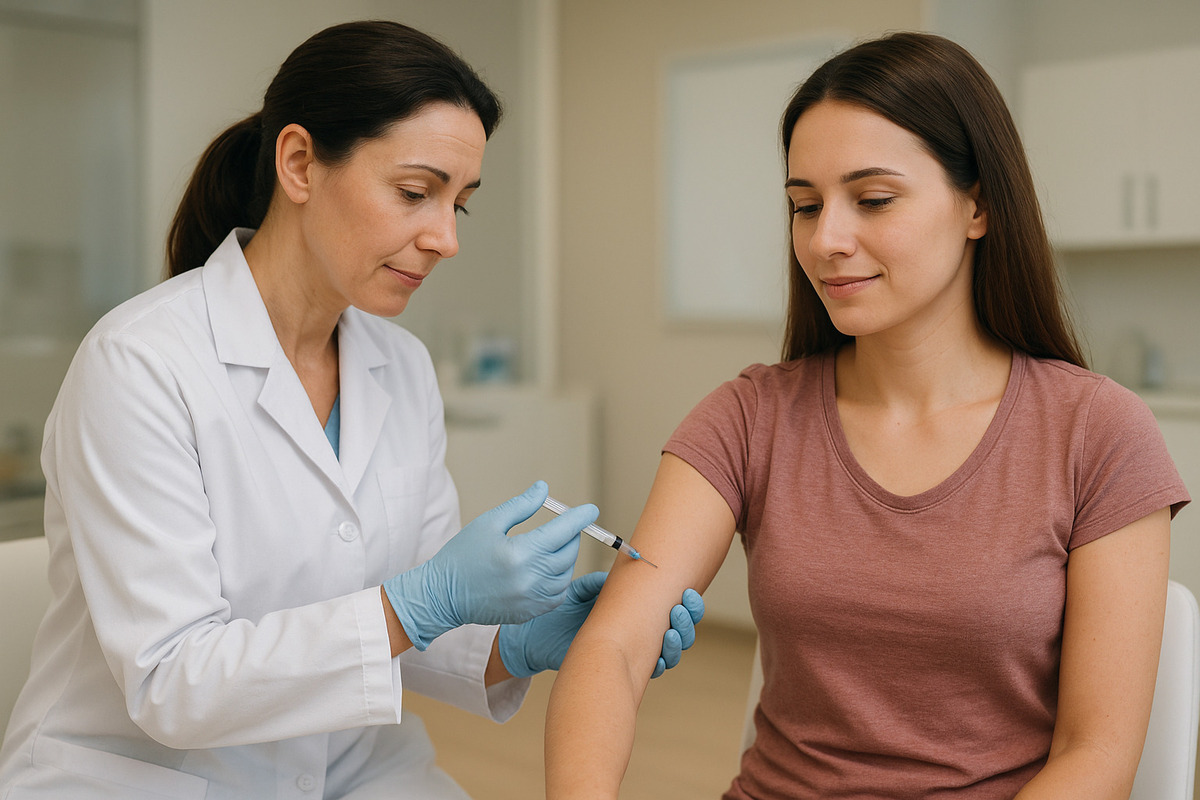
[…] Must Read: How Many Injections Are Needed for IVF Treatment? […]
[…] Also Read: How Many Injections Are Needed for IVF Treatment? […]
[…] Also Read: How Many Injections Are Needed for IVF Treatment? […]
[…] Also Read: How Many Injections Are Needed for IVF Treatment? […]
[…] Also Read: How Many Injections Are Needed for IVF Treatment? […]
[…] IVF process includes ovarian stimulation using IVF injections, egg retrieval, fertilization, and embryo transfer—all focused on achieving pregnancy, not […]
[…] Medications & Injections […]